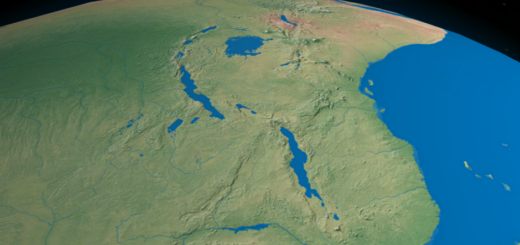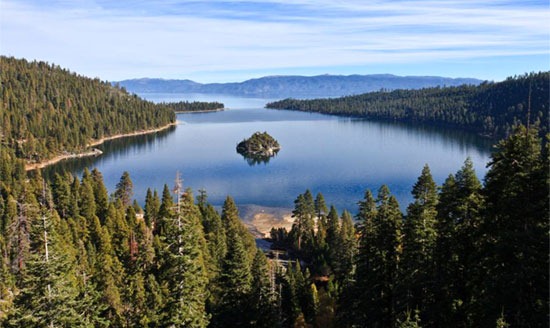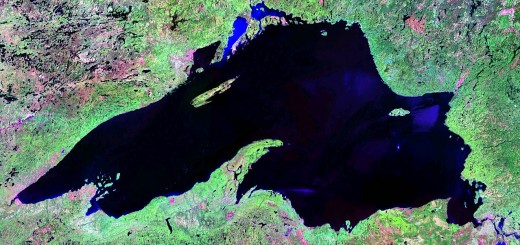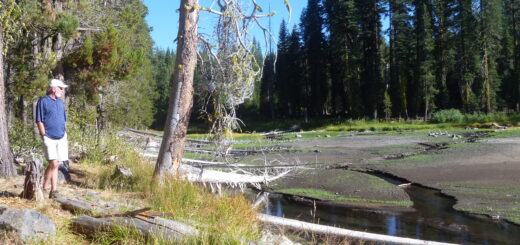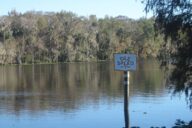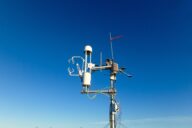Research Summary: Tracking Water Chestnut and Other Invasive Species in Pennsylvania Lakes and Waterways Using iMapInvasives
0Invasive species in Pennsylvania’s lakes and associated waterways can be a threat to developed and natural systems, reduce water quality, degrade recreational experiences, and cause loss of biodiversity. Water chestnut (Trapa natans), for example, is an aquatic plant with the ability to completely smother a lake surface, impeding recreational activities, limiting light and oxygen to native plants, and providing little nutritional value to local animal inhabitants. Water chestnut has been a severe problem for many years in Lake Towhee, a 50-acre lake located in northern Bucks County, Pennsylvania. Used for recreational purposes such as boating and fishing, Lake Towhee and its associated park is described as a place to go to escape the crowds that are often found at other parks. Unfortunately, the presence of water chestnut in Lake Towhee is causing more than a few problems and is currently infesting as much as 30 to 40 percent of the lake. Local county conservationists and partnering agencies are working hard to rid the lake of this aquatic pest before it can spread into the neighboring watershed that feeds the 1,450-acre Lake Nockamixon, Bucks County’s largest lake. (imapinvasives)

Volunteers examine water chestnut on Lake Towhee. (Credit: Bucks County Conservation District)
Since 2009, teams of volunteers along with partnering organizations including the Pennsylvania Department of Environmental Protection (PA DEP), Bucks County Conservation District (BCCD), and Nockamixon State Park have all worked together to pull these aquatic plants out of Lake Towhee using canoes, kayaks, and good ol’ fashioned elbow grease. So far, their efforts have resulted in the removal of water chestnut from the lower half of the lake and near the outlet where it poses the greatest risk of introduction to downstream Lake Nockamixon. To ensure that the pulled plants decompose rather than reproduce once taken from the lake, staff from the BCCD transport the plant material to a wooded location within Lake Towhee Park to be composted. Despite this much effort being put forth, it’s still hard to make a “dent” in this type of invasion for a few reasons. For one, water chestnut plants can produce up to 15 nuts per season and each nut can sink to the bottom of a lake and remain reproductively viable for up to 12 years. This “pesky” aquatic plant can also reproduce vegetatively through broken fragments which will attach to boats and trailers and potentially be spread to new locations. In other words, Lake Towhee’s water chestnut infestation will need to be managed for years to come by the county’s local conservation groups and associated organizations before the lake can be free of water chestnuts.

Water chestnut on the surface of Lake Towhee. (Credit: Bucks County Conservation District)
Many natural resource managers, such as the groups mentioned above that are working to rid water chestnut from Lake Towhee, agree that tracking information associated with the work being done at the lake is vital in understanding the full extent of effort and resources that are involved with the undertaking of such a project. Recently, Pennsylvania adopted an online tool/database that enables natural resource managers involved with invasive species projects to track this type of information through the use of the database’s primary information types, data viewing tools, and querying functions. The tool is called iMapInvasives and is currently being used by seven states including Pennsylvania as well as the Canadian province of Saskatchewan. Each state/province is choosing to utilize iMapInvasives as a means to track invasive species and manage projects associated with invasive species management efforts.

View of observation records (points) being displayed on the map in iMapInvasives, representing the presence of water chestnut in Lake Towhee. (Credit: Amy Stauffer)
Observations have been submitted to PA iMapInvasives by staff from the BCCD and PA DEP which depict the presence of water chestnut in Lake Towhee and show up as geographically-defined points on the map (see photo above). These observations in turn provide information to other natural resource managers (as well as other iMapInvasives users) on the location of this invasive species within the state, the date when the observation was made, and other observer comments.
In addition to an observation, users of iMapInvasives can also choose to add details regarding surveys, invasive infestation and treatments to the database in relation to a particular project. For example, the current efforts of hand-pulling water chestnut from Lake Towhee could be captured and recorded as a treatment record in iMapInvasives. A treatment record in iMapInvasives serves to provide a visual perspective of an area where work has been done to eradicate or manage an invasive species (see photo below). In the case of Lake Towhee, a treatment record would include information on the annual hand-pulling efforts of water chestnut as well as information on the effectiveness of composting the pulled plant material as the chosen disposal method.

View of treatment records (polygons) being displayed on the map tool in iMapInvasives. (Credit: Amy Stauffer)
Each summer, when another round of hand-pulling has taken place, another treatment record can be created to develop a history and timeline of the work being done. This same concept relates to assessment and survey records as these record types also depict their locations in the form of a polygon with many unique comment fields to include additional information. Furthermore, the infestation management record in iMapInvasives is especially useful for multi-year projects since it allows users to group together related records for a particular project, such as all the observation, assessment, survey and treatment records that are put into iMapInvasives for Lake Towhee. By utilizing this infestation management tool, all related data can be stored together for easy reference and quick viewing by those involved with the project.
So how can you get involved with iMapInvasives?
If you’re a new user to the database, you’ll first need to request a login account in order to enter data and view specific information on the map. Anyone can access the PA iMapInvasives Public Map with or without a login account and view basic distribution information on a select number of invasive species. However, in order to enter invasive species data and view more specific information than what is available on the public map, training and a login account are essential. In-person training sessions, webinars, and an online observation data entry training video on YouTube are the available training options that users can choose between. If interested in attending an in-person training or webinar, please send an email to imapinvasives@paconserve.org and ask for information on upcoming training sessions.
**Keep in mind that you don’t have to be a natural resource manager or agency professional to be a user of iMapInvasives. A variety of people outside of these groups are currently using the iMapInvasives database including school teachers, citizen scientists, volunteers, non-profit individuals, and members of the general public.
Also, if you’re interested in serving as a volunteer on behalf of the current management efforts for water chestnut in Lake Towhee, please contact Meghan Rogalus, Watershed Specialist at the Bucks County Conservation District, by sending an email to mrogalus@bucksccd.org.
Selected References
- The Pennsylvania State University & Pennsylvania Sea Grant. (2013). Pennsylvania’s Field Guide to Aquatic Invasive Species. Lititz, PA: Multi-Graphic Marketing.




